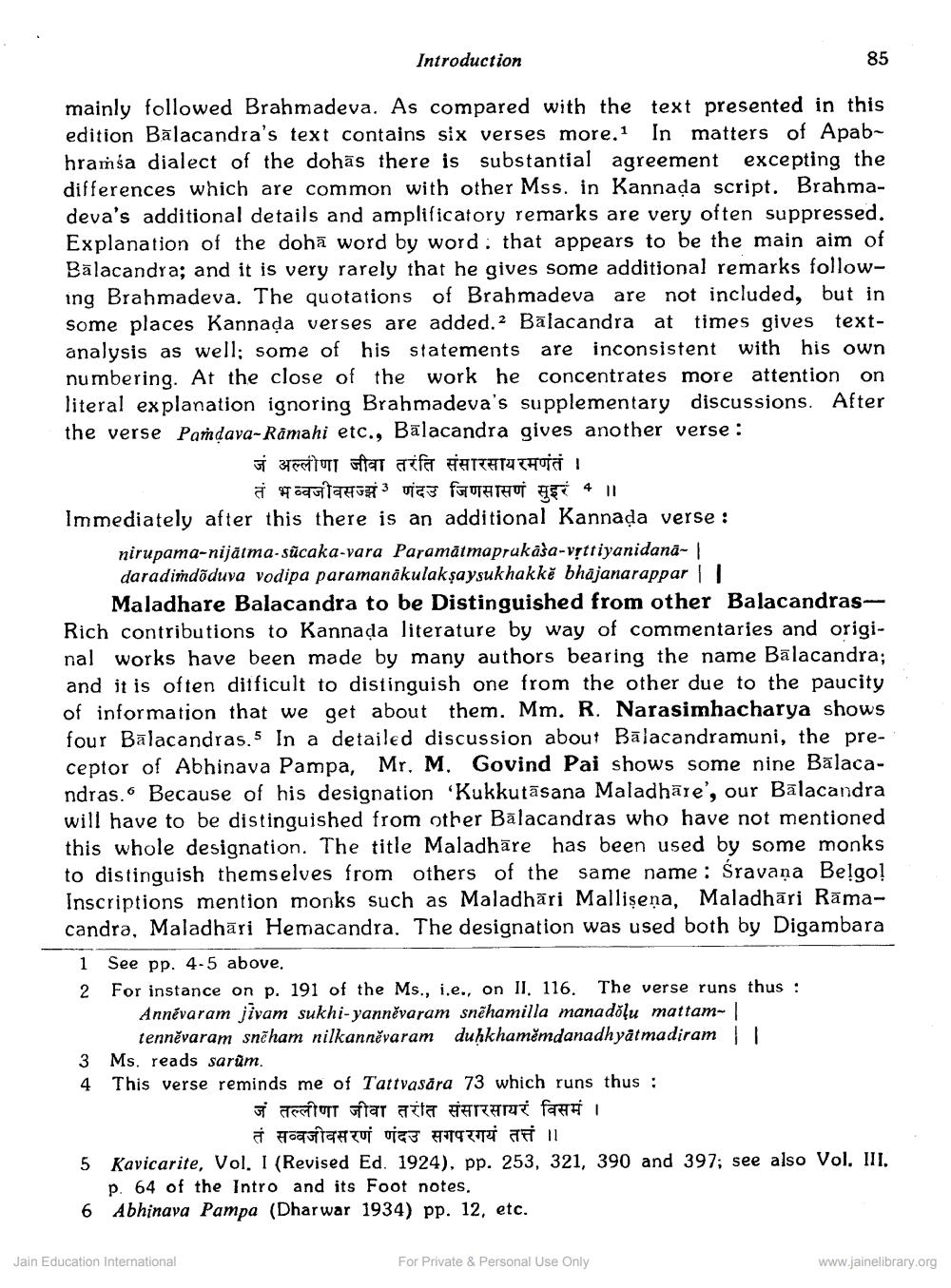________________
Introduction
85
mainly followed Brahmadeva. As compared with the text presented in this edition Bălacandra's text contains six verses more. In matters of Apabhramśa dialect of the dohās there is substantial agreement excepting the differences which are common with other Mss. in Kannada script. Brahmadeva's additional details and amplificatory remarks are very often suppressed. Explanation of the dohā word by word that appears to be the main aim of Bālacandra; and it is very rarely that he gives some additional remarks following Brahmadeva. The quotations of Brahmadeva are not included, but in some places Kannada verses are added.2 Balacandra at times gives textanalysis as well; some of his statements are inconsistent with his own numbering. At the close of the work he concentrates more attention on literal explanation ignoring Brahmadeva's supplementary discussions. After the verse Paídava-Ramahi etc., Balacandra gives another verse:
जं अल्लीणा जीवा तरंति संसारसाय रमणंतं ।
तं भव्वजीवसझं णंदउ जिणसासणं सुइरं + ॥ Immediately after this there is an additional Kannada verse :
nirupama-nijätma-sūcaka-vara Paramātmaprukāša-vịttiyanidanadaradimdõduva vodipa paramanākulakşaysukhakkě bhājanarappar ||
Maladhare Balacandra to be Distinguished from other BalacandrasRich contributions to Kannada literature by way of commentaries and original works have been made by many authors bearing the name Balacandra; and it is often difficult to distinguish one from the other due to the paucity of information that we get about them. Mm. R. Narasimhacharya shows four Bālacandras. 5 In a detailed discussion about Bālacandramuni, the preceptor of Abhinava Pampa, Mr, M. Govind Pai shows some nine Bālacandras. Because of his designation Kukkutāsana Maladhāre', our Bālacandra will have to be distinguished from other Bālacandras who have not mentioned this whole designation. The title Maladhāre has been used by some monks to distinguish themselves from others of the same name : Śravana Belgo! Inscriptions mention monks such as Maladhari Mallisena, Maladhāri Rāmacandra, Maladhāri Hemacandra. The designation was used both by Digambara 1 See pp. 4-5 above. 2 For instance on p. 191 of the Ms., i.e., on II. 116. The verse runs thus :
Annevaram jivam sukhi-yanněvaram snēhamilla manadolu mattam- |
tenněvaram snē ham nilkanněvaram duhkhaměmdanadhyatmadiram 3 Ms. reads sarūm. 4 This verse reminds me of Tattvasara 73 which runs thus :
जं तल्लीणा जीवा तरंति संसारसायरं विसमं ।
तं सव्वजीवसरणं णंदउ सगपरगयं तत्तं ।। 5 Kavicarite, Vol. I (Revised Ed. 1924), pp. 253, 321, 390 and 397; see also Vol. III.
p. 64 of the Intro and its Foot notes. 6 Abhinava Pampa (Dharwar 1934) pp. 12, etc.
Jain Education International
For Private & Personal Use Only
www.jainelibrary.org




